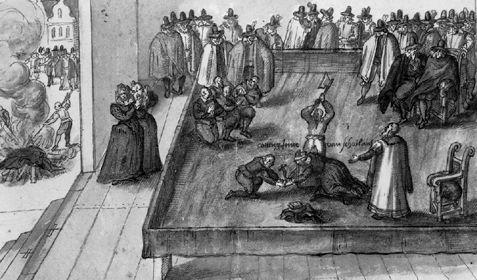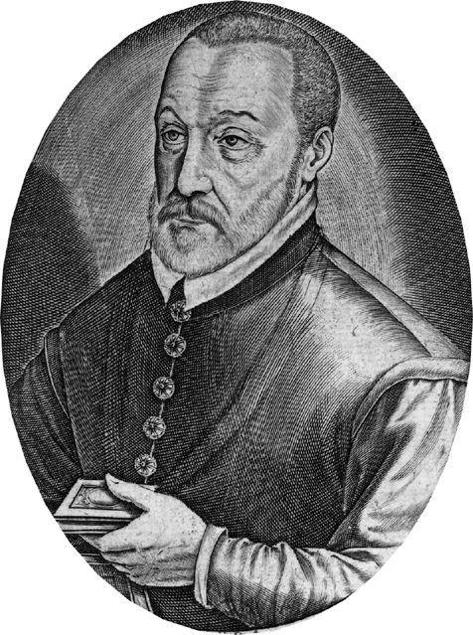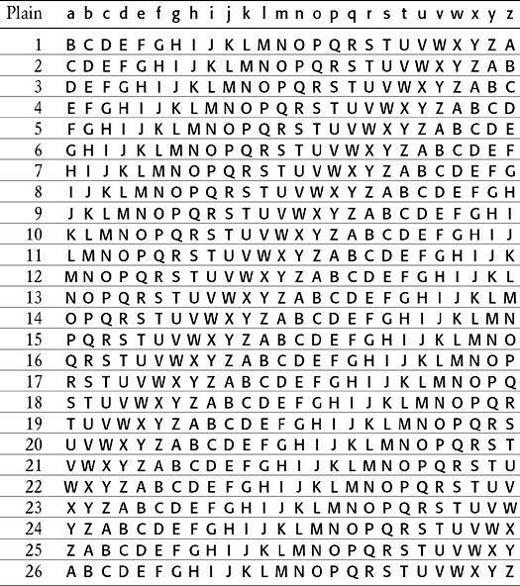The Code Book (10 page)

On February 8, 1587, in the Great Hall of Fotheringhay Castle, an audience of three hundred gathered to watch the beheading. Walsingham was determined to minimize Mary’s influence as a martyr, and he ordered that the block, Mary’s clothing, and everything else relating to the execution be burned in order to avoid the creation of any holy relics. He also planned a lavish funeral procession for his son-in-law, Sir Philip Sidney, to take place the following week. Sidney, a popular and heroic figure, had died fighting Catholics in the Netherlands, and Walsingham believed that a magnificent parade in his honor would dampen sympathy for Mary. However, Mary was equally determined that her final appearance should be a defiant gesture, an opportunity to reaffirm her Catholic faith and inspire her followers.
While the Dean of Peterborough led the prayers, Mary spoke aloud her own prayers for the salvation of the English Catholic Church, for her son and for Elizabeth. With her family motto, “In my end is my beginning,” in her mind, she composed herself and approached the block. The executioners requested her forgiveness, and she replied, “I forgive you with all my heart, for now I hope you shall make an end of all my troubles.” Richard Wingfield, in his
Narration of the Last Days of the Queen of Scots
, describes her final moments:
Then she laide herself upon the blocke most quietlie, & stretching out her armes & legges cryed out In manus tuas domine three or foure times, & at the laste while one of the executioners held her slightlie with one of his handes, the other gave two strokes with an axe before he cutt of her head, & yet lefte a little gristle behinde at which time she made verie small noyse & stirred not any parte of herself from the place where she laye … Her lipps stirred up & downe almost a quarter of an hower after her head was cutt of. Then one of her executioners plucking of her garters espied her little dogge which was crept under her clothes which could not be gotten forth but with force & afterwardes could not depart from her dead corpse, but came and laye betweene her head & shoulders a thing dilligently noted.

Figure 10
The execution of Mary Queen of Scots. (
photo credit 1.4
)
2 Le Chiffre Indéchiffrable
F
or centuries, the simple monoalphabetic substitution cipher had been sufficient to ensure secrecy. The subsequent development of frequency analysis, first in the Arab world and then in Europe, destroyed its security. The tragic execution of Mary Queen of Scots was a dramatic illustration of the weaknesses of monoalphabetic substitution, and in the battle between cryptographers and cryptanalysts it was clear that the cryptanalysts had gained the upper hand. Anybody sending an encrypted message had to accept that an expert enemy codebreaker might intercept and decipher their most precious secrets.
The onus was clearly on the cryptographers to concoct a new, stronger cipher, something that could outwit the cryptanalysts. Although this cipher would not emerge until the end of the sixteenth century, its origins can be traced back to the fifteenth-century Florentine polymath Leon Battista Alberti. Born in 1404, Alberti was one of the leading figures of the Renaissance-a painter, composer, poet and philosopher, as well as the author of the first scientific analysis of perspective, a treatise on the housefly and a funeral oration for his dog. He is probably best known as an architect, having designed Rome’s first Trevi Fountain and having written
De re aedificatoria
, the first printed book on architecture, which acted as a catalyst for the transition from Gothic to Renaissance design.
Sometime in the 1460s, Alberti was wandering through the gardens of the Vatican when he bumped into his friend Leonardo Dato, the pontifical secretary, who began chatting to him about some of the finer points of cryptography. This casual conversation prompted Alberti to write an essay on the subject, outlining what he believed to be a new form of cipher. At the time, all substitution ciphers required a single cipher alphabet for encrypting each message. However, Alberti proposed using two or more cipher alphabets, switching between them during encipherment, thereby confusing potential cryptanalysts.

For example, here we have two possible cipher alphabets, and we could encrypt a message by alternating between them. To encrypt the message hello, we would encrypt the first letter according to the first cipher alphabet, so that h becomes A, but we would encrypt the second letter according to the second cipher alphabet, so that e becomes F. To encrypt the third letter we return to the first cipher alphabet, and to encrypt the fourth letter we return to the second alphabet. This means that the first l is enciphered as P, but the second l is enciphered as A. The final letter, o, is enciphered according to the first cipher alphabet and becomes D. The complete ciphertext reads AFPAD. The crucial advantage of Alberti’s system is that the same letter in the plaintext does not necessarily appear as the same letter in the ciphertext, so the repeated l in hello is enciphered differently in each case. Similarly, the repeated A in the ciphertext represents a different plaintext letter in each case, first h and then l.
Although he had hit upon the most significant breakthrough in encryption for over a thousand years, Alberti failed to develop his concept into a fully formed system of encryption. That task fell to a diverse group of intellectuals, who built on his initial idea. First came Johannes Trithemius, a German abbot born in 1462, then Giovanni Porta, an Italian scientist born in 1535, and finally Blaise de Vigenère, a French diplomat born in 1523. Vigenère became acquainted with the writings of Alberti, Trithemius and Porta when, at the age of twenty-six, he was sent to Rome on a two-year diplomatic mission. To start with, his interest in cryptography was purely practical and was linked to his diplomatic work. Then, at the age of thirty-nine, Vigenère decided that he had accumulated enough money for him to be able to abandon his career and concentrate on a life of study. It was only then that he examined in detail the ideas of Alberti, Trithemius and Porta, weaving them into a coherent and powerful new cipher.

Figure 11
Blaise de Vigenère. (
photo credit 2.1
)
Although Alberti, Trithemius and Porta all made vital contributions, the cipher is known as the Vigenère cipher in honor of the man who developed it into its final form. The strength of the Vigenère cipher lies in its using not one, but 26 distinct cipher alphabets to encrypt a message. The first step in encipherment is to draw up a so-called Vigenère square, as shown in
Table 3
, a plaintext alphabet followed by 26 cipher alphabets, each shifted by one letter with respect to the previous alphabet. Hence, row 1 represents a cipher alphabet with a Caesar shift of 1, which means that it could be used to implement a Caesar shift cipher in which every letter of the plaintext is replaced by the letter one place further on in the alphabet. Similarly, row 2 represents a cipher alphabet with a Caesar shift of 2, and so on. The top row of the square, in lower case, represents the plaintext letters. You could encipher each plaintext letter according to any one of the 26 cipher alphabets. For example, if cipher alphabet number 2 is used, then the letter a is enciphered as C, but if cipher alphabet number 12 is used, then a is enciphered as M.
Table 3
A Vigenère square.

If the sender were to use just one of the cipher alphabets to encipher an entire message, this would effectively be a simple Caesar cipher, which would be a very weak form of encryption, easily deciphered by an enemy interceptor. However, in the Vigenère cipher a different row of the Vigenère square (a different cipher alphabet) is used to encrypt different letters of the message. In other words, the sender might encrypt the first letter according to row 5, the second according to row 14, the third according to row 21, and so on.
To unscramble the message, the intended receiver needs to know which row of the Vigenère square has been used to encipher each letter, so there must be an agreed system of switching between rows. This is achieved by using a keyword. To illustrate how a keyword is used with the Vigenère square to encrypt a short message, let us encipher divert troops to east ridge, using the keyword WHITE. First of all, the keyword is spelled out above the message, and repeated over and over again so that each letter in the message is associated with a letter from the keyword. The ciphertext is then generated as follows. To encrypt the first letter, d, begin by identifying the key letter above it, W, which in turn defines a particular row in the Vigenère square. The row beginning with W, row 22, is the cipher alphabet that will be used to find the substitute letter for the plaintext d. We look to see where the column headed by d intersects the row beginning with W, which turns out to be at the letter Z. Consequently, the letter d in the plaintext is represented by Z in the ciphertext.

To encipher the second letter of the message, i, the process is repeated. The key letter above i is H, so it is encrypted via a different row in the Vigenère square: the H row (row 7) which is a new cipher alphabet. To encrypt i, we look to see where the column headed by i intersects the row beginning with H, which turns out to be at the letter P. Consequently, the letter i in the plaintext is represented by P in the ciphertext. Each letter of the keyword indicates a particular cipher alphabet within the Vigenère square, and because the keyword contains five letters, the sender encrypts the message by cycling through five rows of the Vigenère square. The fifth letter of the message is enciphered according to the fifth letter of the keyword, E, but to encipher the sixth letter of the message we have to return to the first letter of the keyword. A longer keyword, or perhaps a keyphrase, would bring more rows into the encryption process and increase the complexity of the cipher.
Table 4
shows a Vigenère square, highlighting the five rows (i.e., the five cipher alphabets) defined by the keyword WHITE.